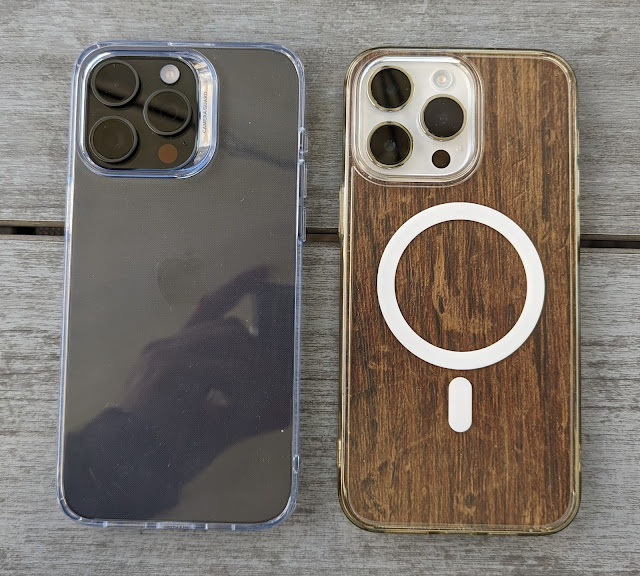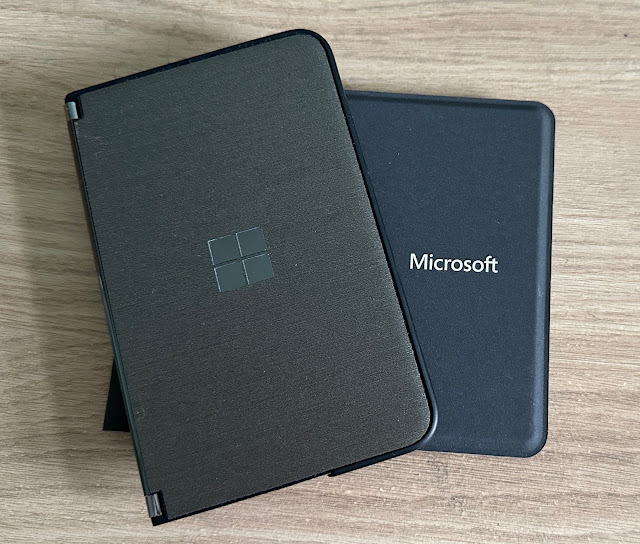I did want to plug my friend
Juan Carlos Bagnell's YouTube video here, as I'm essentially repurposing his bullet points, but in written prose rather than on camera! You see, the move to larger camera sensors in smartphones has been something I've been tracking for one and a half
decades. And in each case, sensors getting larger has been a
very.good.thing.
Except that good 'ol physics, the same physics I've been touting as a benefit as sensors have gotten larger and more and more light is being gathered, and photos have thus got better even in dim lighting conditions - that same physics has meant that the trend has passed a tipping point and we're now starting to see real world issues in real world phones.
Too shallow depth of field
Starting off with something that's perhaps subjective, since it depends on exactly what you want your phone to photograph. But a larger (1") sensor means a larger aperture feeding it light, and the larger the aperture, the shallower the 'depth of field'.
Don't worry if you don't understand the camera-physics here, the upshot is that only the object at a specific distance will be in focus, the rest will be artistically blurred. Which you might think is nice and some depth of field 'bokeh' is often desirable. But when the depth of field is so shallow that even a whole flower or face or plate of food has sharp sections and blurry sections then we have a problem.
A nature shot showing that shallow depth of field can be an issue - the centre of the plant head if in focus, the outer is not. Artistic or a problem? I think I'd like 6"/15cm depth of field for real world subjects...
Typically, one would like an absolute minimum depth of field of around 1.5"/4cm - for close-up shots, of flowers, for example. But a 1" sensor requires such a large aperture that the actual depth of field is often less than this minimum, leading to blurry flower petals - or blurry ears on a human subject.
Too much z depth
By which I mean that your phone has to have a larger camera bump. Physics dictates that (what with light largely travelling in straight lines) the larger the sensor, the greater the distance between it and the optical stack of lenses. (This is 'z depth', as in the 'x' and 'y' axes are up and down the face of the phone.)
So, as you'll have observed, the larger and more capable our phone cameras get, the thicker they get as well. So the new Xiaomi 13 Ultra, while claiming a thickness of around 10mm (for the phone body), is actually 1.5cm thick if you include the cameras.
Now 1.5cm is a thickness typical of smartphones from well over a decade ago - and it's now crossing a boundary, I think. I'm not someone who wants everything to be super-thin, but one a half centimetres is getting a little silly.
Too much light
Finishing off with something that's counter intuitive - a larger (1") sensor means a larger aperture feeding it light. And this is fine for still shots, since the electronic shutter speed can be made shorter as needed to avoid over-exposure. But it's not good for video, something which more and more phone users love to shoot.
You see, with so much light being gathered and a typical shutter speed of (say) 1/5000s (in sunlight) for a still, shooting at a typical 30 frames per second in video form and you're presenting microscopic and very crisp slices of time, 'animated' at 30fps, which looks more stuttery than video on a smaller phone camera's optics, which perhaps shoots frames at 1/250s - the latter has just enough movement within its capture time to create the effect of fluid motion when animated.
The Lumia 1020 from a decade ago, with its (now sweet spot?) 1/1.5" 41MP sensor and (thankfully not too wide, so again a sweet spot?) f/2.2 aperture open.
The solution now?
Phone camera sensors should 'stop' at somewhere around 1/1.5" (yes, the same sensor size as my beloved Lumia 1020 from 2013 - way ahead of its time!) - and this is plenty for all light conditions, as we factor in the huge processor power available, to take (say) 20 photos in a second and then combine them algorithmically to reduce noise and improve colours and clarity.
For comparison, even the current iPhone 14 Pro series, Samsung Galaxy S23 Ultra, and Google Pixel 7 Pro have a sensor size of around 1/1.3", already slightly more than needed and just starting to cause depth of field issues. Going to one inch sensors (and associated apertures) effectively reduces depth of field by other 30%.
Manufacturers will hate this, of course, since they love to improve certain 'numbers' on spec sheets, year on year. But real users are about to find out that bigger is not always better.
And the ultimate solution?
What's really needed, of course, if one can stomach the physicality of really large phone cameras, are variable apertures, i.e. implementing a microscopic iris mechanism to 'stop' down the fast apertures for larger depth of field and limiting light per frame when shooting video. We've seen phone cameras in the past implement a dual aperture solution (Nokia N86, Samsung Galaxy S9, S10 series, and now Xiaomi 13 Ultra), so in principle this can be done.
Whether phone manufacturers join the dots and work all this out remains to be seen.
PS. If you like this feature and want to support my work then please do so here via PayPal. Thanks.




Comments
It doesn't. In practice, for a given z-depth, the aperture gets smaller with a larger sensor.
"Physics dictates that (what with light largely travelling in straight lines) the larger the sensor, the greater the distance between it and the optical stack of lenses."
Also not true. The RX1's rear lens element is only 2mm away from its full frame sensor. And that sensor is 7 times larger than a 1" sensor. It's not unusual for fixed lenses, especially in smartphones which use all kinds of crazy aspherics, to be essentially touching the sensor no matter the size.
"1/5000s ... looks more stuttery than video on a smaller phone camera's optics, which perhaps shoots frames at 1/250s"
Let's look at the examples you posted. The Xiaomi 13 has a 1" sensor and f/1.9 lens. The Nokia 1020 would actually be at 1/2000s which is absolutely stuttery. Even the iPhone X with its tiny 1/3" sensor and f/1.8 lens would be at 1/800. Sure, you could stick a slow lens on any of these to get correct motion blur but that is at the expense of a lot of low light capability.
ND filters like what the N8 and 808 are the right call. Sony has electronic NDs in its cinema cams so that technology could make its way down. You mention variable apertures and they would help for depth of field and shutter speed. Note that using the Xiaomi's f/4, it would have a shutter speed of 1/1000 so not enough for smooth video motion blur. Or full well capacity for sensors could be improved for lower base ISOs.